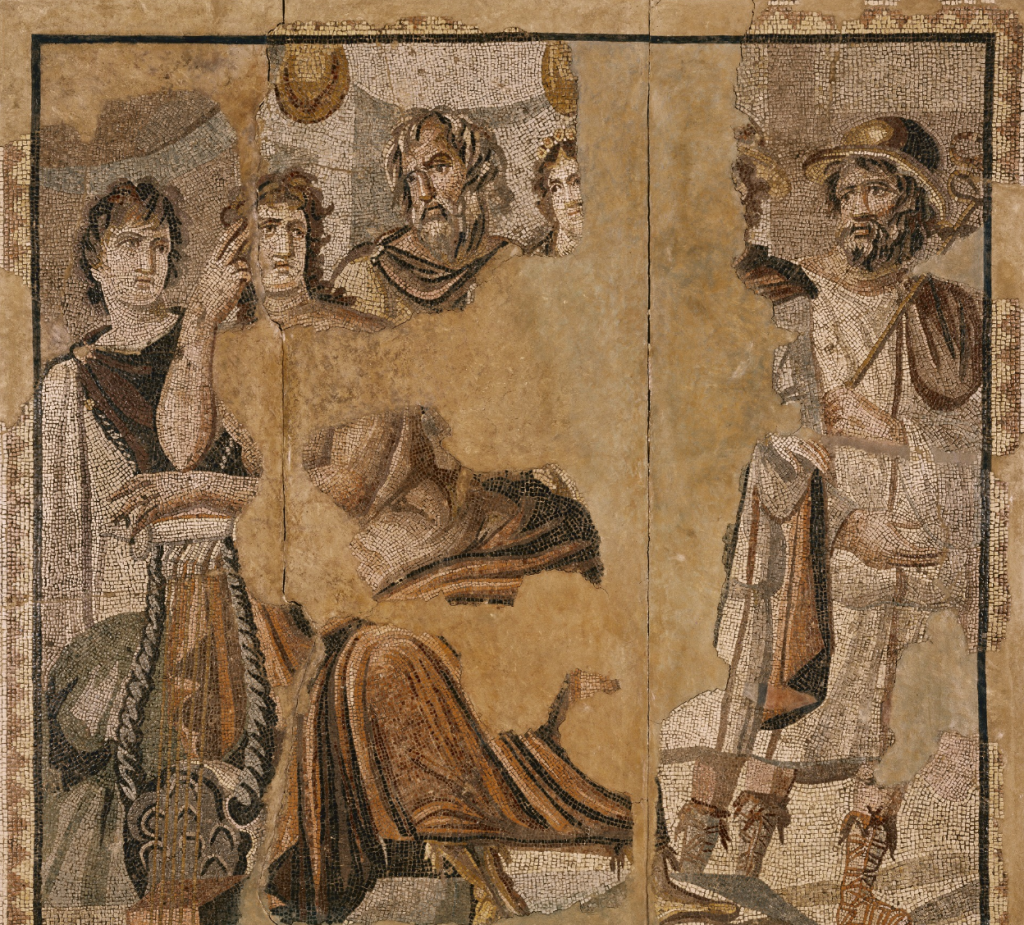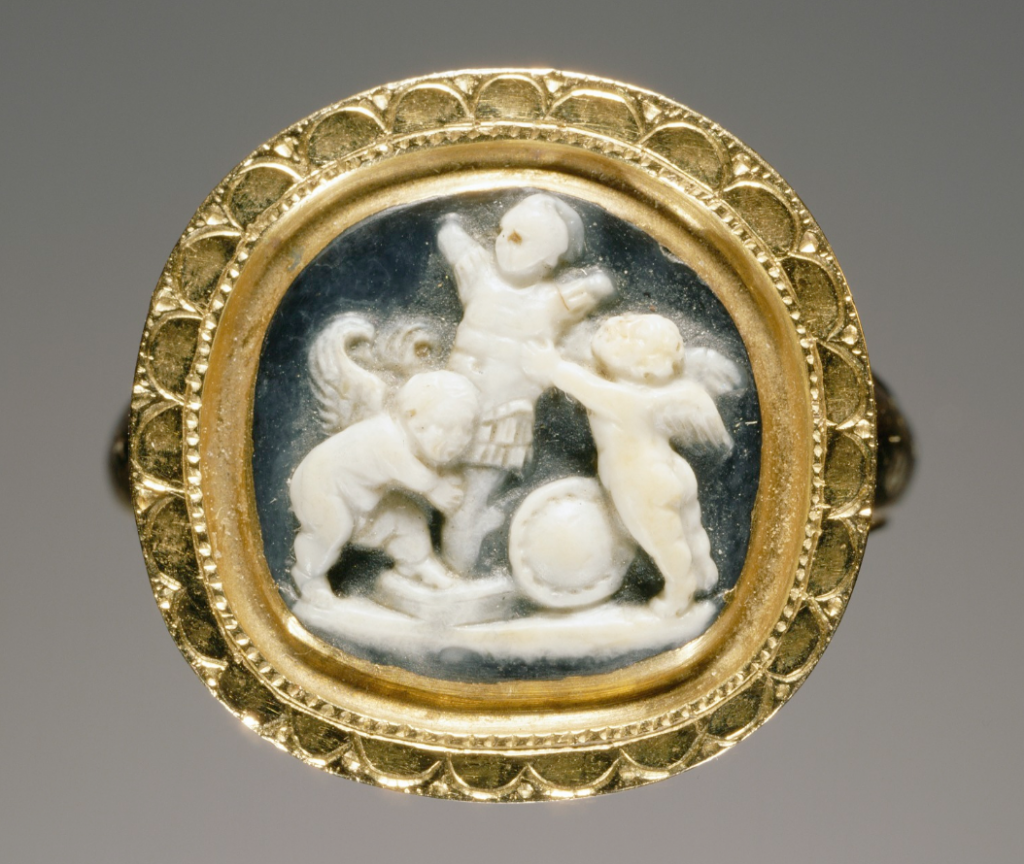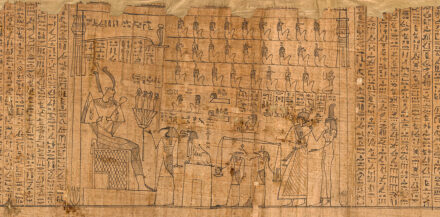
The original trophy…wives. Mosaic Floor with Achilles and Briseis, A.D. 100s, Roman. 85 7/16 x 89 3/8 in. The J. Paul Getty Museum, 68.AH.12
With the Oscars upon us, it seems timely to think a little about prizes in antiquity. Prize winning goes way back in Greek culture, as does it wicked sister—status envy.
The opening of Homer’s Iliad describes how Agamemnon, forced to return his prize in war, swipes that of Achilles. In this scenario, the prizes aren’t gold statuettes, but captive women. Trophy wives, you might say, and indeed the battlefield is the origin of the word “trophy.” It can be traced back to the Greek tropaion, which refers to a marker that was set up at the point on the battlefield where the enemy had been put to flight. Tropaion is related to the Greek verb trepein, meaning “to turn around.”
Initially, this marker took the form of a suit of the opponents’ armor (something to bear in mind when you’re admiring all those costumes on the red carpet). This was set up on a stake or a convenient tree stump, as you can see depicted on a Roman ring on display at the Getty Villa, an onyx cameo that was once owned by Winston Churchill’s grandfather. Here, though, the figures setting up the trophy aren’t soldiers, but two chubby Cupids. Presumably, they’ve been victorious in making someone fall in love.

Victory in the romance department. Cupids triumph over their foes’ shield in a depiction of a tropaion. Cameo set into a ring. Gem: A.D. 1–100, Roman; Ring: modern. 1/2 in. high. The J. Paul Getty Museum, 2001.28.8
As for prizes, they were awarded for athletic competitions (again, the clue’s in the word—the ancient Greek for prize is athlon), such as Panathenaic amphorae and the oil they contained. It’s perhaps no surprise, therefore, that a competitive element was an intrinsic aspect in the development of Greek theater. Thespis was reportedly the first to produce a play in a competition at Athens, the prize for which was a goat. (More etymology here: goat is tragos in Greek, which is where we get “tragedy.” And Thespis gives us “thespian.”)
In time, prizes came to be awarded to the actors, too, but the really big winners were the wealthy individuals funding and producing the performances. Some things don’t change.

An athletic trophy, once filled with oil. Attic Panathenaic Amphora, 490–480 B.C., Greek. 25 9/16 in. high. The J. Paul Getty Museum, 77.AE.9




Comments on this post are now closed.